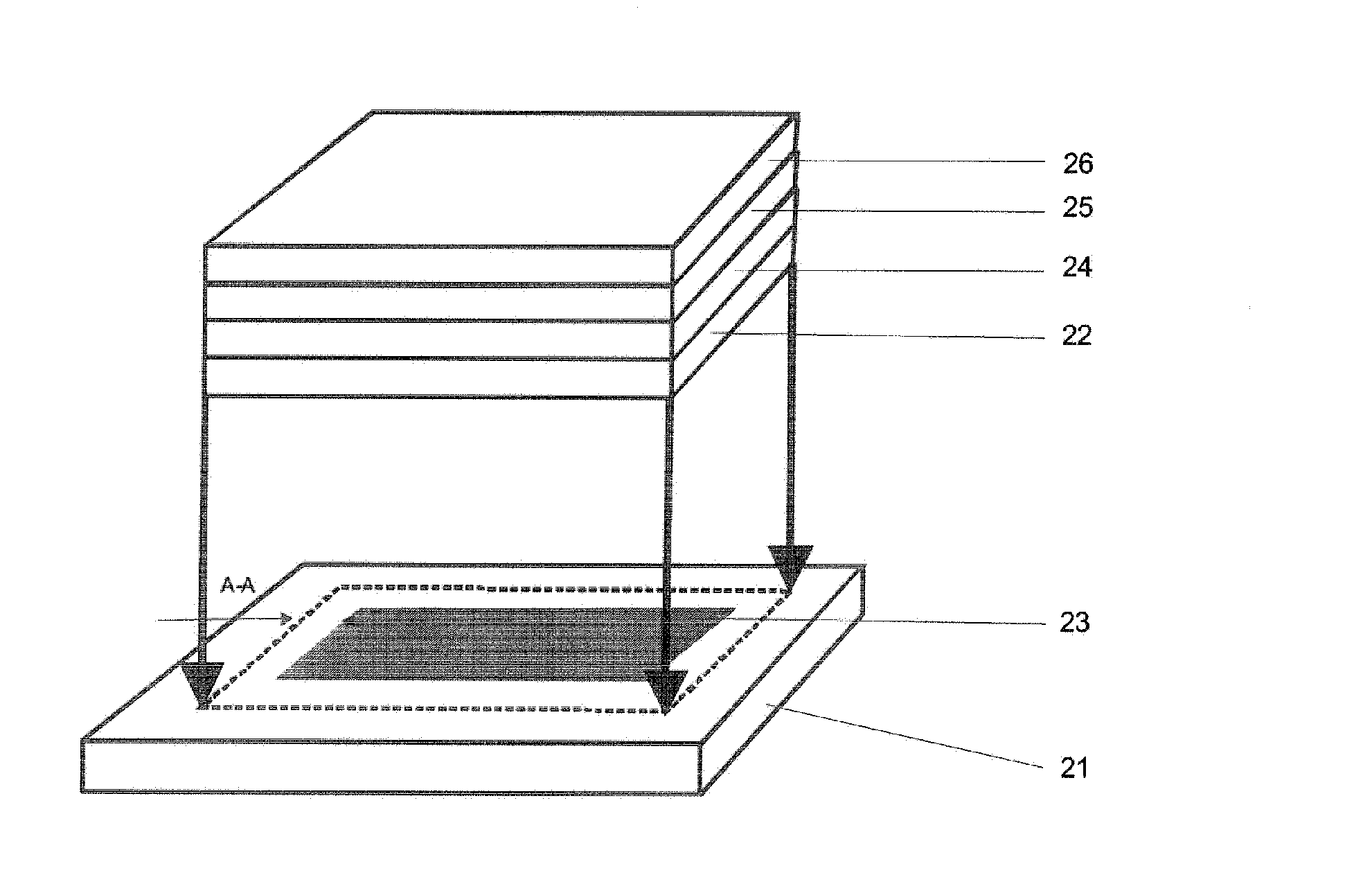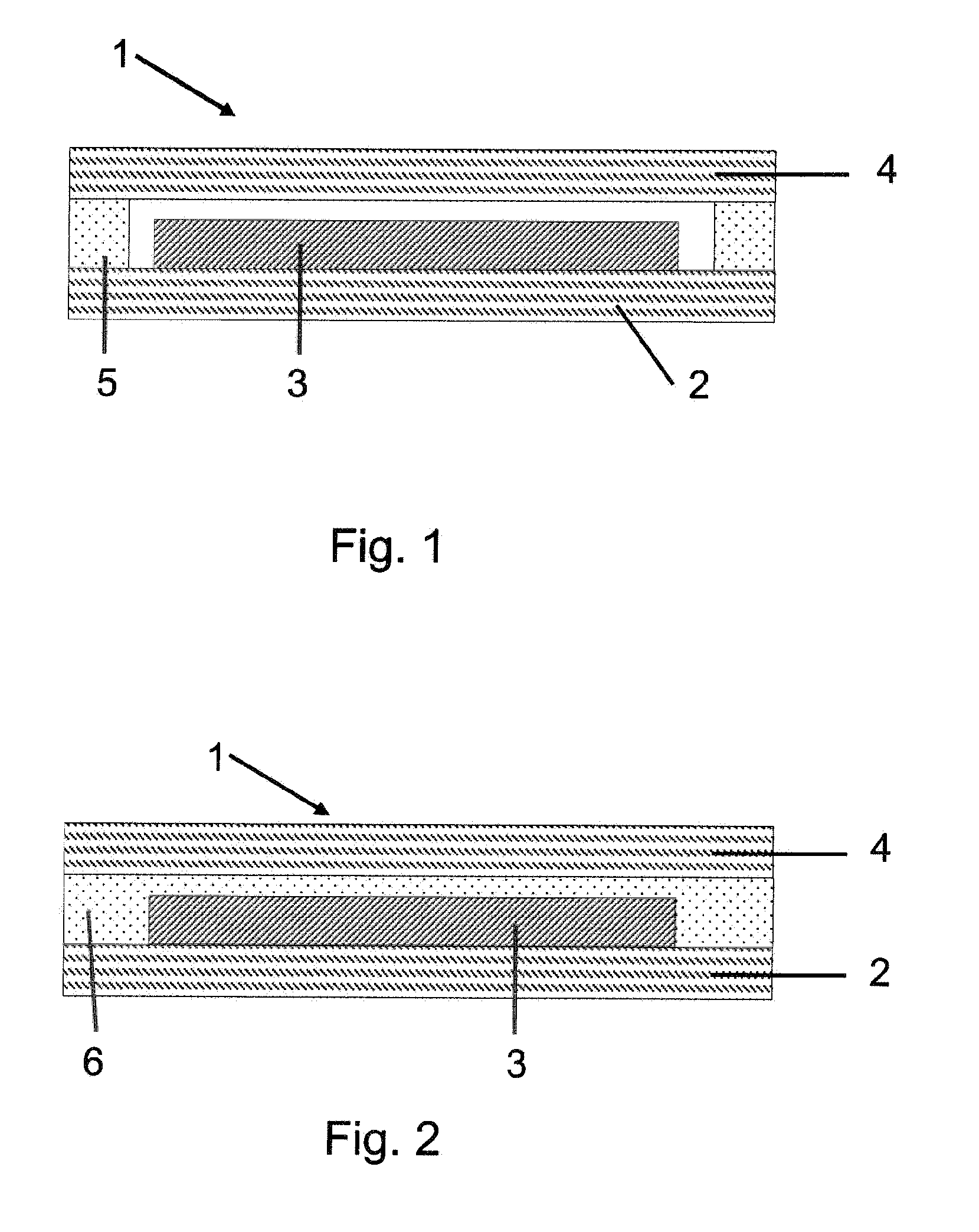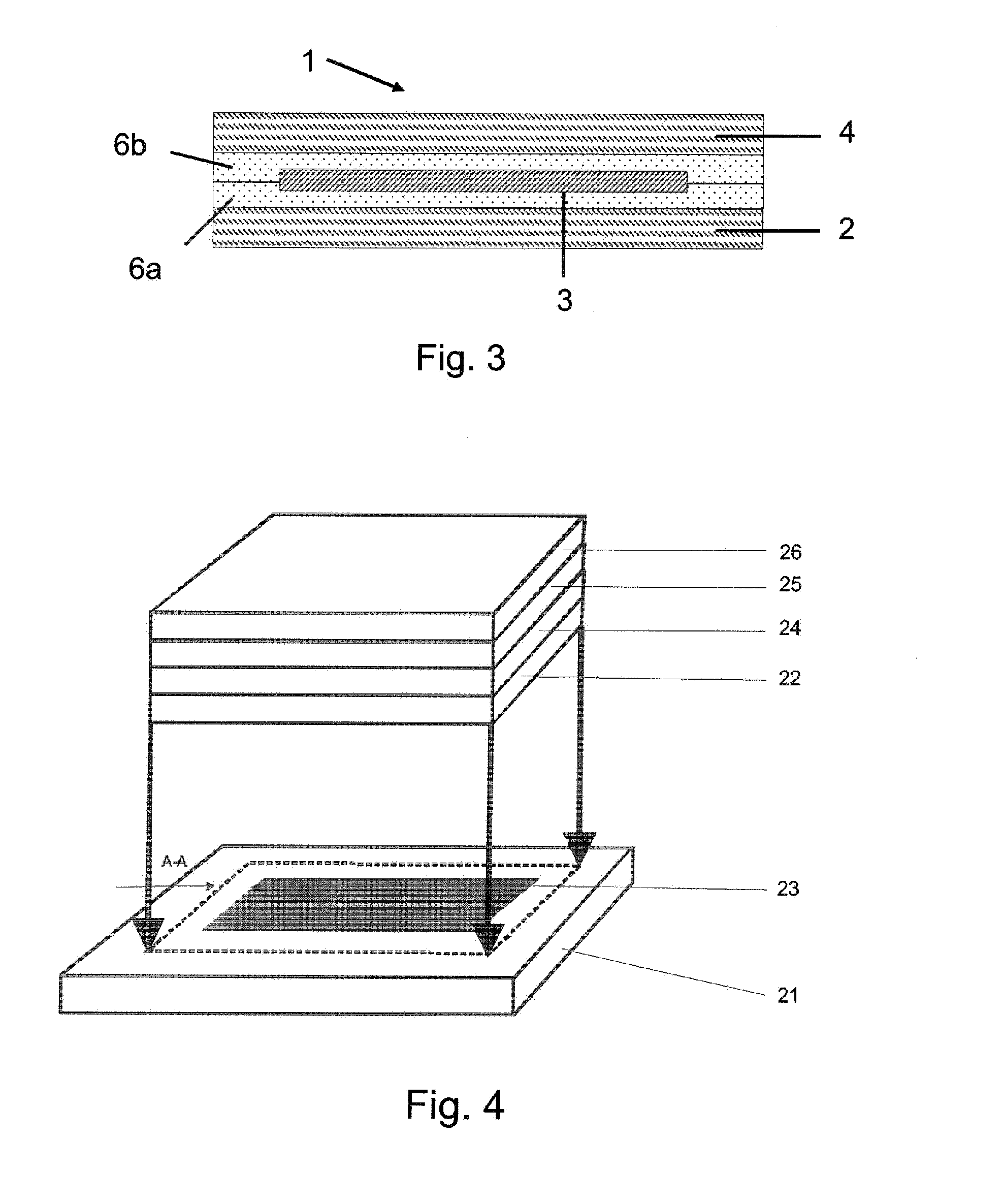Adhesive tape for encapsulating an organic electronic arrangement
a technology of organic adhesives and electronic arrangements, applied in the direction of film/foil adhesives without carriers, film/foil adhesives, solid-state devices, etc., can solve the problems of series of unwanted effects, damage to the electronic structure sensitive of the arrangement, and the use of liquid adhesives is accompanied by unwanted effects, etc., to achieve good barrier effect with respect to water vapor, high flow viscosity, and high dimensional stability
- Summary
- Abstract
- Description
- Claims
- Application Information
AI Technical Summary
Benefits of technology
Problems solved by technology
Method used
Image
Examples
Embodiment Construction
[0156]
K1: Pressure-sensitive adhesive100 partsTuftec P 1500SBBS with 30% by weight block polystyrenecontent from Asahi.100 partsEscorez 5600The SBBS contains about 68% by weightdiblock content. hydrogenated HC resin witha softening point of 100° C., from Exxon 25 partsOndina 917white oil comprising paraffinic andnaphthenic fractions, from Shell
[0157]The solvent used was a 2:1 mixture of toluene and acetone.
K2: Hotmelt adhesive100 partsKraton FGmaleic anhydride-modified SEBS with 13%1924by weight block polystyrene content, 36% byweight diblock and 1% by weight maleicacid, from Kraton 25 partsEscorez 5600hydrogenated HC resin (hydrocarbon resin)having a softening point of 100° C.,from Exxon 1 partaluminumacetylacetonate
[0158]The solvent used was a 2:1 mixture of toluene and acetone.
K3: Radiation-activatable hotmelt adhesive25 partsEpiclonbisphenol A and bisphenol F based epoxy resin from835 LVDIC, Japan, molecular weight Mw about 350 g / mol25 partsEpicotebisphenol based epoxy r...
PUM
| Property | Measurement | Unit |
|---|---|---|
| Thickness | aaaaa | aaaaa |
| Fraction | aaaaa | aaaaa |
| Particle size | aaaaa | aaaaa |
Abstract
Description
Claims
Application Information
 Login to View More
Login to View More - R&D
- Intellectual Property
- Life Sciences
- Materials
- Tech Scout
- Unparalleled Data Quality
- Higher Quality Content
- 60% Fewer Hallucinations
Browse by: Latest US Patents, China's latest patents, Technical Efficacy Thesaurus, Application Domain, Technology Topic, Popular Technical Reports.
© 2025 PatSnap. All rights reserved.Legal|Privacy policy|Modern Slavery Act Transparency Statement|Sitemap|About US| Contact US: help@patsnap.com



